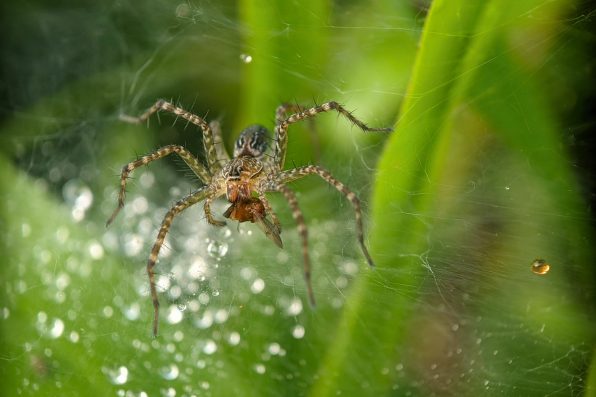Unlike the majority of spiders, which dwell on land, the diving bell spider spends most of its life underwater. It is the only species of spider that is able to thrive in such a watery habitat.
Although it lives an aquatic lifestyle, it still needs to breathe air. So, how does it survive underwater? The answer is through a unique adaptation that allows it to create a diving bell.
The diving bell spider (Argyroneta aquatica), also known as the water spider, is native to freshwater habitats across Europe, as well as Central and Northern Asia. They are found from the British Isles and Siberia to Iran and South Korea. There is even a separate subspecies in Japan.
They are fairly small, only measuring between 0.3 and 0.6 inches long. They subsist on a diet of small bugs and fish.
To catch their prey, they will set up a series of webs around their territory. If they feel a tug on a web, they will swim over and drag the prey back to their homes.
In order to breathe underwater, the diving bell spider constructs a silk structure. It spins a web between underwater plants and fills it with air brought down from the surface via its hairy body, creating a bubble.
“It has developed an amazing adaptation for this aquatic life,” remarked Craig Macadam, the conservation director of the U.K. invertebrate charity Buglife. “The spider has numerous water-repellent hairs over its body which trap air from the water surface. The spider then spins a silk structure where it forms an air bubble, which it uses in the same way as a diving bell.”
The bubble enlarges to fit the spider. It can live in the bubble for more than a day. Nitrogen diffuses from the bubble and causes it to shrink, so the spider is forced to resurface for fresh air. The females’ bubbles are double the size of the ones made by males because they need more space for nursing.
Male diving bell spiders tend to be larger and heavier than the females, which is unusual for spiders. According to a 2003 study published in the journal Evolutionary Ecology Research, males are larger and have longer front legs to help them move through the water more efficiently.

Sign up for Chip Chick’s newsletter and get stories like this delivered to your inbox.


